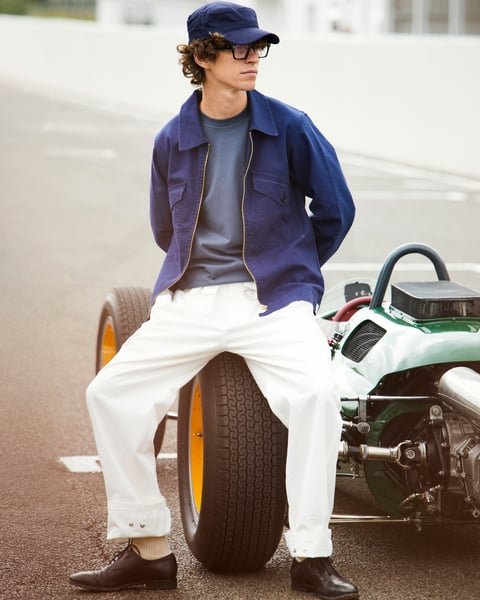Marc Marquez continues to dabble with disaster in Moto GP
The much-anticipated opening round of the longest-ever MotoGP season last month was cruelly revealing.
The new sprint race was both thrilling and scary, setting the scene for 20 more high-risk outings. The full-length full-points grand prix proved a bit of a stroll for the favourite, defending champion Pecco Bagnaia and his too-dominant Ducati. And it brought triumph followed by disaster for the man many expect to be his greatest challenger, leaving him as one of four injured riders to miss the second round a week later in Argentina.

Marc Marquez first demonstrated pure genius, in overcoming the blatant weaknesses of his factory Honda; then showed with devastating clarity the penalty of having to over-ride an outclassed bike.
“Outclassed” is not a word often applied to Honda, easily the most decorated of marques in racing history. Their 312 wins outranks Yamaha on 245; while 25 Constructors’ titles leads MV Agusta on 16 and Yamaha on 14.
Trouble is, ever since their six-times champion Marquez got hurt at the start of 2020, for two of the ensuing three seasons Honda hasn’t won a single race. With their leader hampered, only fully returning to strength late last year after a fourth operation to straighten his right humerus, machine development ran up a blind alley.

Only Marc had been able to win repeatedly on the twitchy V4; without him lesser riders suffered crash after crash as they strove to keep up with riders on bikes that were continuing to get better.
Marc returned at full strength for tests this year. Meanwhile Honda had been hard at work. The long-standing chief track engineer Takeo Yokoyama was gone, replaced by compatriot Ken Kawauchi, who built his reputation with the departed Suzuki team. Other outsourcing – highly unusual for this proud and independent company – included a rear-suspension swing-arm and, according to some rumours, even a full chassis or at least in-depth consultation with German Moto2 constructors Kalex.
The latest engine, he said, was fine. The rest of the bike, not so much. “We need more work. This bike is not good enough for the top five.”
There was no more time, however; and at the first race at the end of March engine and aerodynamic development were frozen for the rest of the season. Improvements will have to come from chassis and suspension.

Meanwhile, the racing had begun. From the start Marc demonstrated that his personal view of “damage limitation” includes trying to win, against all odds.
This made for an inspiring performance, in a strong field where Aprilia and KTM as well as dominant Ducati have made clear steps forward – leaving Yamaha also struggling to make the pace.
Marc failed to make the top ten in Friday’s practice, so he had to play in Q1 with the other slower riders, needing to be first or second to make it to Q2. No problem. On a single run he broke the all-time circuit record to place first.
More remarkably still, he picked up a handy (Ducati) slipstream in Q1. He took pole.
Astonishing.
Then in the afternoon, in the first of the new sprint races, a ride of sustained ferocity saw him claim a most unlikely third place.
It was heroic.

The next day however revealed the risk in the level of riding he was forced to deploy.
“With our bike now, the only way to make the lap time is under braking,” he explained. A time of maximum risk.
Being Marquez, and intermittently superhuman, he usually gets away with it. So it was on the first lap of the season-opening full-length Portuguese GP, briefly in the lead and surviving one out-of-the-saddle moment. On the second lap, with his hard front tyre perhaps not yet fully up to temperature on the way into the first-gear Turn Three right-hander, “I had a little lock-up”.
He slid into a Ducati, punting Jorge Martin off to rejoin at the back, and ricocheted onwards, now out of control. Ahead, early leader and local hero Miguel Oliveira was just wheeling his Aprilia into the corner.
Marc slammed into his right leg, sending both flying. Marc got to his feet, and ran straight over to the stricken Oliveira, clearly injured.
Luckily, his leg was not broken, just massively bruised. Marquez shouldered the blame, and accepted the stewards sanction: two long-lap penalties to be served at the subsequent Argentine GP. “I did a mistake, and I accept the punishment,” he said.

But the mistake was understandable. It was the consequence of a rider of extraordinary determination having to over-ride an inadequate motorcycle. A less competitive man would accept its limitations. But that man would never be a great multi-decorated legend like Marquez.
Honda is a great company and will surely regain technical momentum. Hopefully it will be in time for Marc, who turned 30 in February, to reassert his greatness without having to risk his own and other riders’ lives much more.
Footnote: It is not only Marc who makes mistakes. The race stewards specified he must serve his penalty “at the Argentine GP”, a week later. But Marc pulled out of that race, to recover from a small hand fracture. The stewards modified the wording to apply the sanction “at the next MotoGP race in which he will be able to participate”. His team at once protested: this so-called “clarification” broke the rules. At the time of writing, the appeal is awaiting judgement from a higher authority, the “MotoGP Court of Appeal”. It seems Marquez’s talent for getting away with things might serve also in escaping his punishment.
Images courtesy of Motorsport Images.
moto gp
Marc Marquez
Honda
Ducati
Motorcycles





